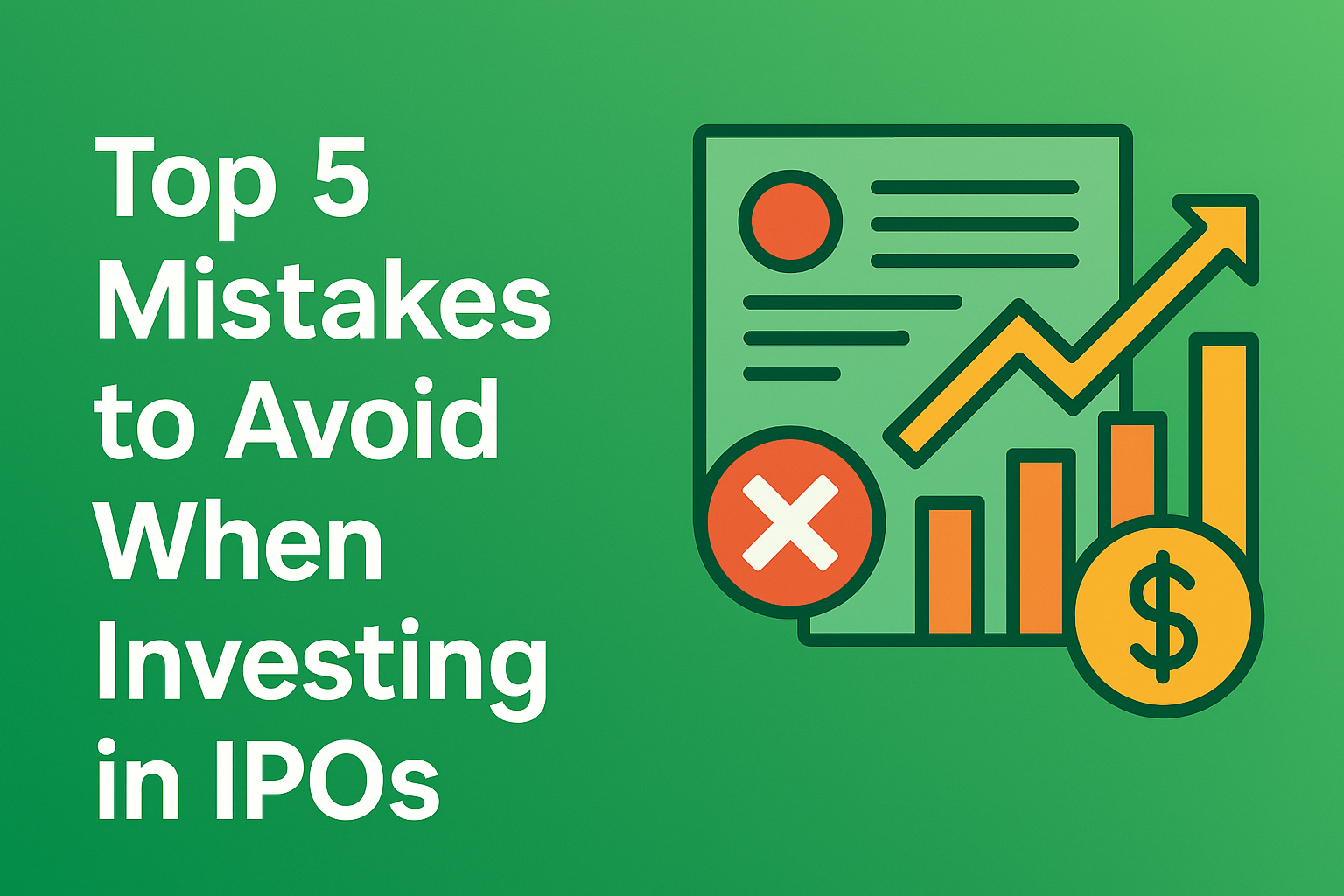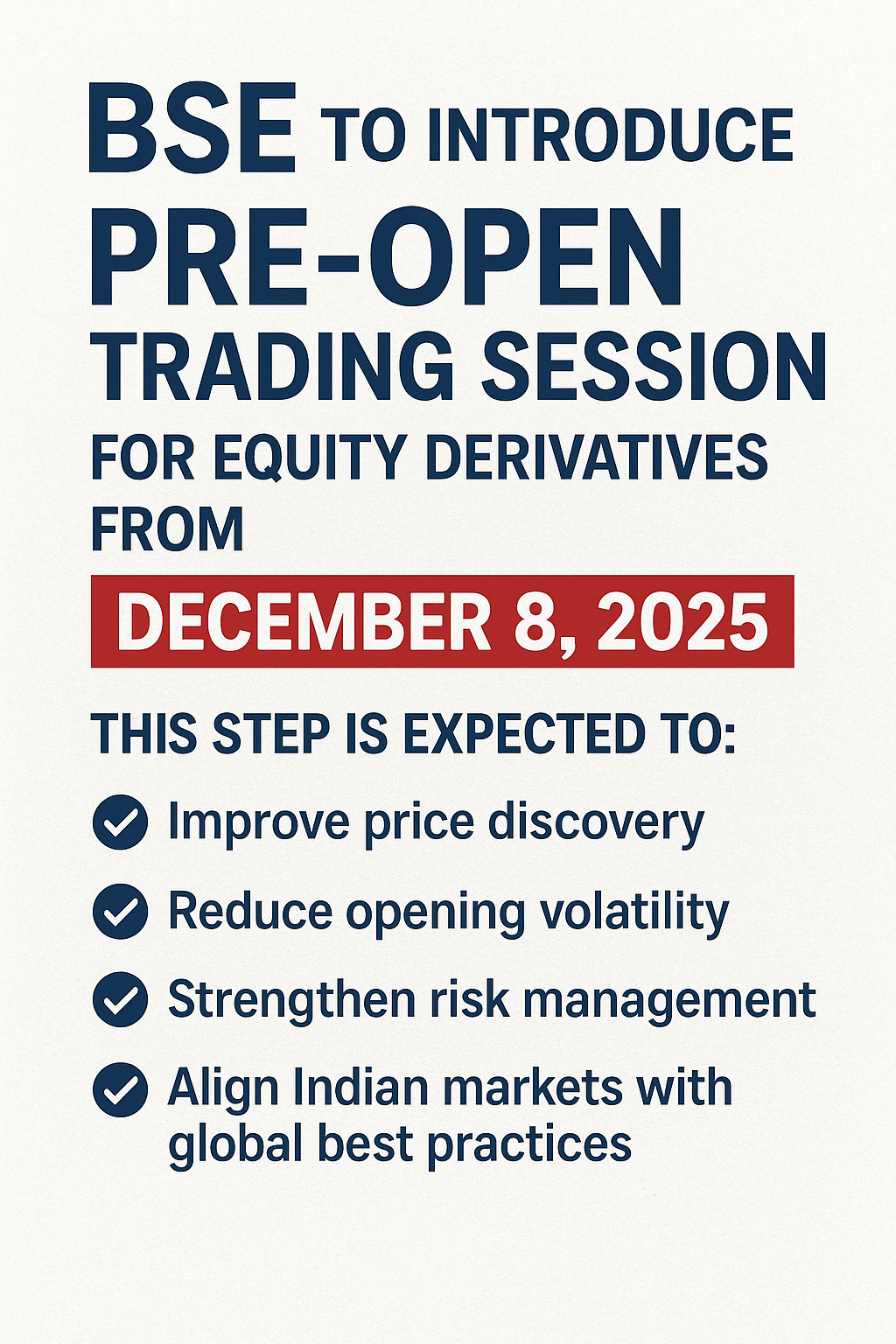Avoid costly mistakes when investing in IPOs. Learn the top 5 IPO investing mistakes and how to protect your capital with smart strategies.
Initial Public Offerings (IPOs) often generate buzz, excitement, and the illusion of easy profits. After all, who wouldn’t want to be an early investor in the next Zomato, Nykaa, or Paytm? But IPO investing isn’t just about catching the next unicorn it’s about understanding the risks, reading between the lines, and avoiding costly mistakes.
Whether you're a beginner or a seasoned trader, here are the top 5 mistakes to avoid when investing in IPOs and how to protect your capital.
1. Ignoring the Prospectus and Financials
Mistake: Investing without reading the company’s red herring prospectus or analyzing its financial statements.
Why It’s Risky:
- The prospectus is your primary source of truth. It outlines the company’s business model, revenue sources, risks, use of IPO proceeds, and competitive positioning.
- Many investors skip this step and rely on hearsay or media summaries.
Example: A’s ltd IPO prospectus revealed significant losses and a complex business structure. Investors who ignored these red flags faced sharp post-listing declines.
Smart Strategy:
Read the “Risk Factors” and “Objects of the Issue” sections carefully.
Look for consistent revenue growth, improving margins, and realistic projections.
If the company is loss-making, assess whether its path to profitability is credible or speculative.
2. Getting Swayed by Hype and Media Buzz
Mistake: Making decisions based on social media trends, influencer opinions, or news headlines.
Why It’s Risky:
- IPOs often attract attention from influencers, YouTubers, and media outlets but hype doesn’t equal value.
- Overhyped IPOs may be priced aggressively, leading to post-listing corrections.
Example: XYZ’s IPO was heavily promoted and initially surged, but later saw significant volatility as valuations came under scrutiny.
Smart Strategy:
- Separate sentiment from substance. Use independent research tools like Screener.in or TickerTape.
- Avoid FOMO (Fear of Missing Out). If you missed the IPO, you could still invest post-listing after price stabilizes.
3. Overlooking Lock-In Periods and Insider Selling
Mistake: Ignoring when early investors, founders, or employees are allowed to sell their shares.
Why It’s Risky:
Why It’s Risky:
- After the lock-in period ends (usually 6 months), insiders may offload large volumes of shares.
- This can lead to sudden price drops and signal lack of long-term confidence.
Example: Several tech IPOs saw sharp declines after lock-in expiry, as institutional investors exited positions.
Smart Strategy:
- Check the lock-in period in the prospectus.
- Monitor insider activity post-listing. If major stakeholders are selling aggressively, reassess your position.
4. Misjudging Valuation and Listing Premiums
Mistake: Assuming the IPO price reflects fair value or guarantees listing gains.
Why It’s Risky:
- IPO pricing is influenced by underwriters, market sentiment, and demand not necessarily fundamentals.
- Many IPOs list at a premium, only to correct sharply once the excitement fades.
Example: ABC’s IPO in 2008 was massively oversubscribed but crashed post-listing due to unrealistic valuations.
Smart Strategy:
- Compare valuation metrics like Price-to-Earnings (P/E), EV/EBITDA, and Price-to-Sales with industry peers.
- If the IPO is priced aggressively, consider waiting for post-listing corrections before entering.
5. Investing Without a Clear Exit Strategy
Mistake: Buying IPO shares without knowing when or why you’ll sell.
Why It’s Risky:
- IPOs are volatile in the first few weeks. Without a plan, investors often panic during dips or hold indefinitely.
- Emotional decisions lead to losses especially in speculative IPOs.
Example: Retail investors in A ltd who didn’t set exit targets saw their gains erode during market corrections.
Smart Strategy:
- Define your exit based on price targets, time horizon, or company milestones (e.g., profitability, expansion).
- Use stop-loss orders or trailing stops to protect gains.
Final Thoughts: IPOs Are Not Lottery Tickets
IPOs can be exciting but they’re not shortcuts to wealth. By avoiding these five common mistakes, you’ll approach IPO investing with clarity, discipline, and a long-term mindset.
Remember: Not every IPO is a golden ticket. Some are just glitter.
Explore More on IPO Investing
If you're serious about making smarter IPO decisions, don’t miss these essential reads:
Best Bank Account for Applying to IPOs: Discover which banks support ASBA, UPI, and third-party IPO applications and how to choose the right one for seamless investing.
Applying for IPOs But Have No Idea How? 10 Common Questions Answered A beginner-friendly guide that demystifies the IPO application process from price bands to allotment tracking.
Strategies for Diversifying IPO Investments Learn how to build a balanced IPO portfolio across sectors, timelines, and company types to minimize risk and maximize returns.
Want to stay ahead of upcoming IPOs and read more such type of content? Subscribe to our newsletter for weekly IPO alerts, allotment updates, and expert analysis tailored for smart investors.



